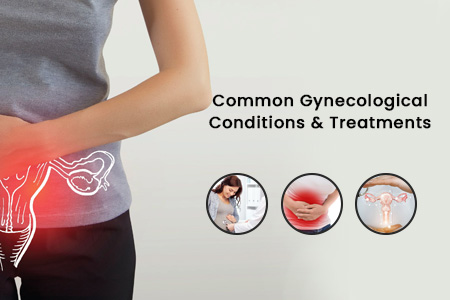2024-07-10
2024-04-12
2023-10-12
2023-09-13
2023-08-06
2023-08-04
2023-07-29
2023-07-05
2023-06-09
2023-02-03
2023-02-02
2023-01-06
2023-01-05
2023-01-04
2023-01-03
2023-01-02
2022-11-02
2022-07-30

Dysmenorrhea
Dysmenorrhea is a condition that affects women, causing them to experience unusually painful cramps, lower back pain, discomfort in the inner thighs and hips, as well as symptoms like nausea and loose stools during their menstrual days. The pain arises from a lack of adequate oxygen supply to the muscles of the uterus during contractions. It is worth noting that the severity of this pain tends to lessen as a woman gets older and is often resolved after childbirth.
What causes dysmenorrhea?
The underlying causes of dysmenorrhea can be anyone or a combination of the following:
Mild dysmenorrhea is treated with measures such as heat, mild analgesics (painkiller), and exercises while severe cases of dysmenorrhea are treated with non-steroidal anti-inflammatory agents.
In a typical menstrual cycle, lasting around 28 days, the period of bleeding usually occurs for a duration of 3 to 5 days. Any deviations from this pattern are considered abnormal and warrant evaluation. Abnormal uterine bleeding refers to excessive or irregular bleeding in women, both in terms of duration and amount. It is essential to understand the causes and available treatments for this condition.
Hormonal imbalance is a common cause of abnormal uterine bleeding. Fluctuations in hormone levels, such as estrogen and progesterone, can disrupt the regularity of the menstrual cycle and result in abnormal bleeding patterns. Physical abnormalities within the uterus, such as polyps, fibroids, or adenomyosis, can cause abnormal uterine bleeding. The treatment of abnormal uterine bleeding depends on the underlying cause. Hormonal imbalances can often be regulated through the use of hormonal medications or birth control methods.
The causes of abnormal uterine bleeding are divided into two:
UTI: Urinary tract infection
How is it treated?
In the case of anatomic abnormality, it is surgically removed, e.g. polyps or fibroids are surgically removed. For chronic endometritis, antibiotics are prescribed and the IUD is removed. Antibiotics are also a very effective urinary tract infection treatment option. If the condition is severe, then endometrial ablation or hysterectomy is suggested.
Premenstrual syndrome (PMS) is a concern that deeply impacts a woman's emotions, physical well-being, and behavior during specific days prior to her menstrual cycle. It is widely believed that the fluctuations in estrogen and progesterone levels bear responsibility for its occurrence. These changing hormone levels can have profound effects on a woman's body and mind, leading to various symptoms and changes.
How is it treated?
Your doctor will recommend you:
Urinary incontinence in women is divided into two categories:
Stress urinary incontinence
Stress urinary incontinence is the loss of urine control due to sudden intra-abdominal pressure example while coughing, sneezing, and laughing.
How is it treated?
Urge incontinence
Urge incontinence (unstable bladder) is the loss of urine control due to uninhabitable detrusor contraction.
How is it treated?
Surgery cannot help treat this condition. Usually, the patients are provided with bladder retainer.
Uterine fibroids are the noncancerous growths found in the uterus. It ranges in size from seedlings (unnoticeable) to large masses (can disfigure or enlarge the uterus).
Generally, fibroids are classified by their location, they are:
The treatment options are:
Hysterectomy:
Hysterectomy is a medical procedure that involves surgically removing the entire uterus and fibroids are the number one reason for opting Hysterectomy.
Myomectomy:
It is conservative surgical therapy. Here, the healthcare specialist removes the strips of fibroid (or any non-cancerous growth) in the uterus (leaving it intact) under direct vision.
Uterine fibroids are the result of smooth muscle and tissue forming nodules within the uterine wall. Although uterine fibroids are not cancerous, they can lead to excessive or painful menstrual bleeding, frequent urination, or even infertility. In the past, a hysterectomy was often the only recommended treatment. However, recent advancements have shown that fibroids may not always require intervention beyond over-the-counter anti-inflammatory drugs or prescription medications in more severe cases.
Endometriosis, on the other hand, involves the growth of endometrial tissue outside the uterus. Normally, during each menstrual cycle, women experience their period as the shedding of this endometrial tissue from within the uterus. However, when this tissue grows on the outside of the uterus, it can break apart and bleed during the menstrual period. The issue arises when the blood from this displaced tissue has no outlet, causing inflammation and swelling in the surrounding tissues. This inflammation can potentially lead to the formation of scar tissue, lesions, or growths. Over the years, treatment approaches for endometriosis have varied. However, doctors in Best Hospital in KPHB now generally agree that if the symptoms are mild, medication for pain relief may be sufficient without requiring further treatment.
Sree Manju Hospitals offers comprehensive solutions for conditions such as uterine fibroids and endometriosis. With Best Hospital in KPHB advanced medical expertise and cutting-edge treatment options, we provide a range of interventions tailored to the individual needs of patients. Sree Manju Hospitals, Best Hospital in KPHB ensures that their patients receive the most up-to-date treatments and care. Through our expertise and compassionate approach, we empower women to address these conditions effectively and regain control of their h